-
CATEGORY ::
- All Seeds /
- All Flower Seeds /
- All Poppy Seeds









Poppy Seeds - Commutatum
SEASON
Annual
USDA ZONES
3 - 10
HEIGHT
15 inches
BLOOM SEASON
Summer
BLOOM COLOR
Red w/ black blotches
ENVIRONMENT
Full sun
SOIL TYPE
Loose, well-drained, pH 6.1 - 7.3
DEER RESISTANT
Yes
SEEDS PER POUND
2,780,000
SEASON
Perennial
USDA ZONES
3 - 8
HEIGHT
24 - 36 inches
BLOOM SEASON
Late spring
BLOOM COLOR
Mix
ENVIRONMENT
Full sun
SOIL TYPE
Well-drained, pH 5.8 - 6.8
DEER RESISTANT
Yes
SEASON
Annual
USDA ZONES
3 - 10
HEIGHT
10 inches
BLOOM SEASON
Mid spring to late summer
BLOOM COLOR
Red
ENVIRONMENT
Full sun
SOIL TYPE
Prefers gritty, fast-draining conditions, pH 6.6 - 7.5
DEER RESISTANT
Yes
SEASON
Annual
USDA ZONES
3 - 9
HEIGHT
12 inches
BLOOM SEASON
Mid Spring to late Summer
BLOOM COLOR
Purple, grey
ENVIRONMENT
Full sun
SOIL TYPE
Moist, well drained soils
DEER RESISTANT
Yes
SEASON
Annual
USDA ZONES
3 - 9
HEIGHT
15 - 25 inches
BLOOM SEASON
Late Spring through Summer
BLOOM COLOR
Red
ENVIRONMENT
Full sun
SOIL TYPE
Organically rich, medium moisture, well-drained soils
DEER RESISTANT
Yes
SEASON
Annual
USDA ZONES
3 - 9
HEIGHT
18 - 24 inches
BLOOM SEASON
Late Spring through Summer
BLOOM COLOR
Mix
ENVIRONMENT
Full sun
SOIL TYPE
Organically rich, medium moisture, well-drained soils.
DEER RESISTANT
Yes
SEASON
Annual
USDA ZONES
3 - 9
HEIGHT
36 inches
BLOOM SEASON
Mid Spring to late Summer
BLOOM COLOR
Mix
ENVIRONMENT
Full sun
SOIL TYPE
Moist, well drained soils
DEER RESISTANT
Yes
SEASON
Annual
USDA ZONES
3 - 10
HEIGHT
24 inches
BLOOM SEASON
Mid Spring to late Summer
BLOOM COLOR
White
ENVIRONMENT
Full sun
SOIL TYPE
Moist, well drained soils
DEER RESISTANT
Yes
About...
Poppy Lady Bird (Papaver Commutatum Lady Bird) - Easy to grow from Poppy seeds, the Ladybird Poppy features a charming crimson single bloom with a black blotch. Named for the beneficial insect, the lady bug, this Poppy plant is positively dazzling when grown in mass groupings.MORE POPPY OPTIONS
Planting Directions
TEMPERATURE
55 - 60F
AVERAGE GERM TIME
21 - 28 days
LIGHT REQUIRED
No
DEPTH
Surface sow and lightly cover 1/16th inch
SOWING RATE
5 - 6 seeds per plant
MOISTURE
Keep seeds moist until germination
PLANT SPACING
12 inches
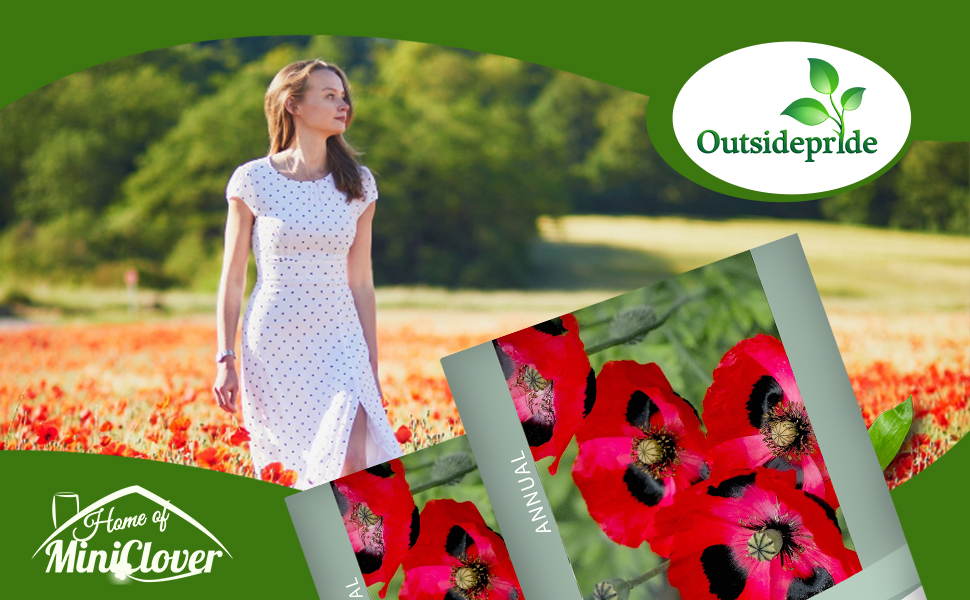
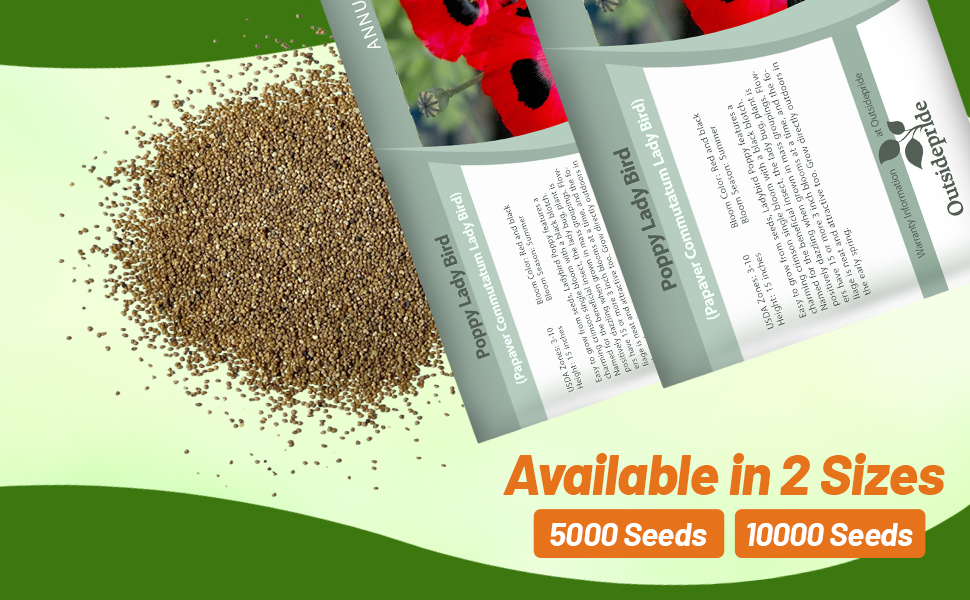
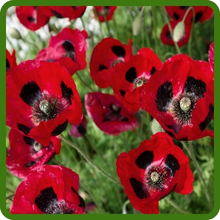
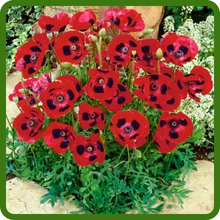
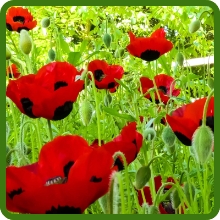

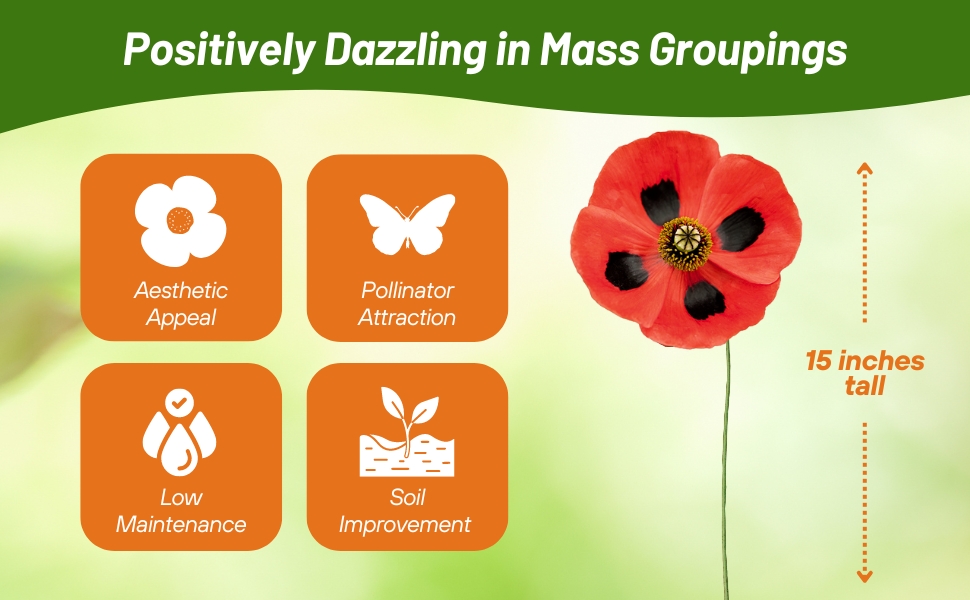
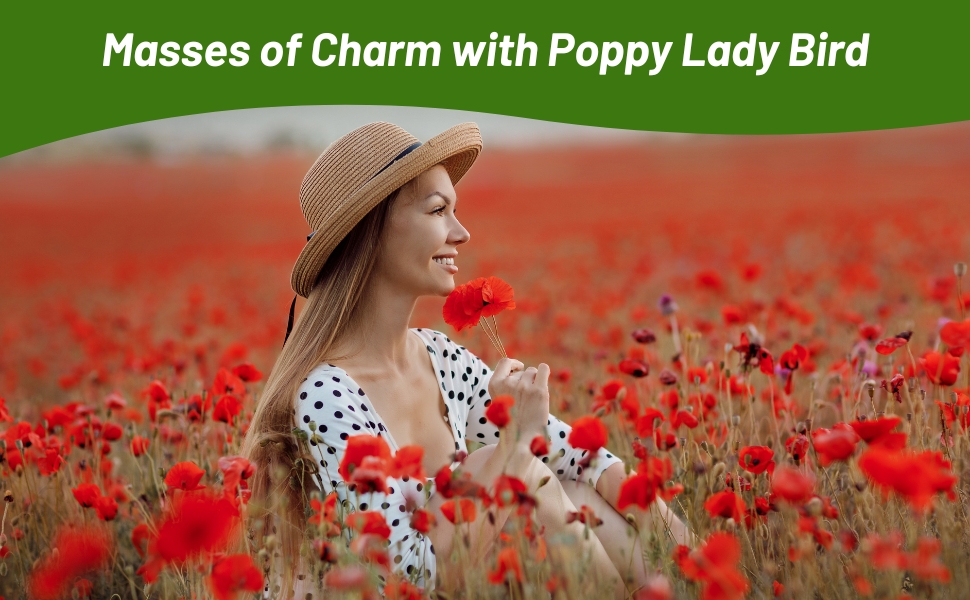
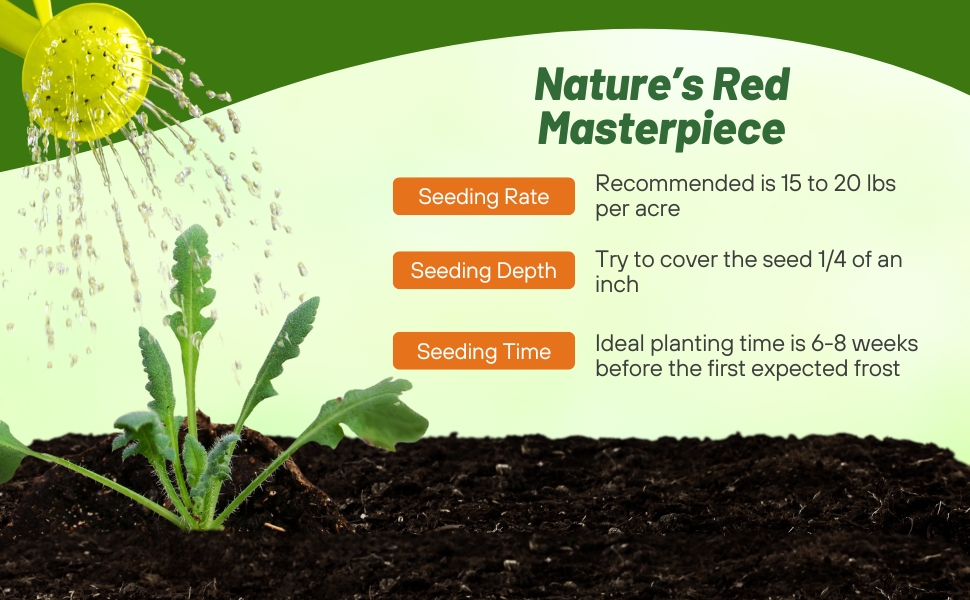
Poppy Lady Bird (Papaver Commutatum Lady Bird) - Easy to grow from flower seeds, the Ladybird Poppy features a charming crimson single bloom with a black blotch. Named for the beneficial insect, the lady bug, this Poppy plant is positively dazzling when grown in mass groupings. Ladybird Poppy flowers have 15 or more 3 inch blooms at a time, and the foliage is neat and attractive too. There's nothing more eye-catching than a grouping of red poppies! Grow Poppy seeds directly outdoors in the early spring.
Common Questions
Do Papaver Commutatum work as a cut flower?
Yes, these flowers make good cut flowers.
Can I grow in containers?
These flowers do well in containers as well as borders, cottage gardens, and meadows.
Do flowers need deadheaded?
If you want to extend your bloom season you will need to deadhead your flowers.
Will deer eat my flowers?
Fortunately, deer tend to avoid these flowers.
Planting Directions
TEMPERATURE
60F
AVERAGE GERM TIME
14 - 28 days
LIGHT REQUIRED
Yes
DEPTH
1/8 inch
SOWING RATE
50,000 seeds covers 625 square feet or 1/4 pound per 5,000 square
MOISTURE
Keep seeds moist until germination
PLANT SPACING
12 - 18 inches
Orientale Poppy (Papaver Orientale Mix) - Orientale Poppies add old-fashioned charm to gardens. These perennials establish well from Poppy seeds, and they grow well in sunny areas in soil that is well-drained. Oriental Poppy plants are hardy and do well in mountain wildflower gardens at high elevations. The silky, bowl-shaped flowers appear in late spring and burst from distinctive buds covered in bristly hairs. This Poppy mix includes shades of red, orange, pink, white and bi-colored forms. Many of the wildflowers feature inky-dark blotches at the base of the petals and colorful stamens in the center. Oriental Poppies have seed pods that will drop wildflower seeds for germination the following spring. There's nothing more beautiful than a meadow filled with Poppy wildflowers!



























